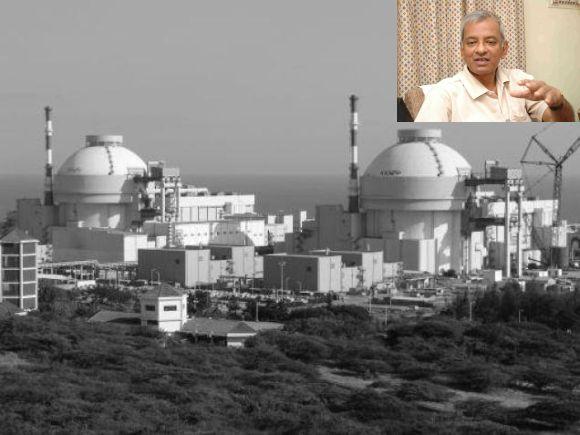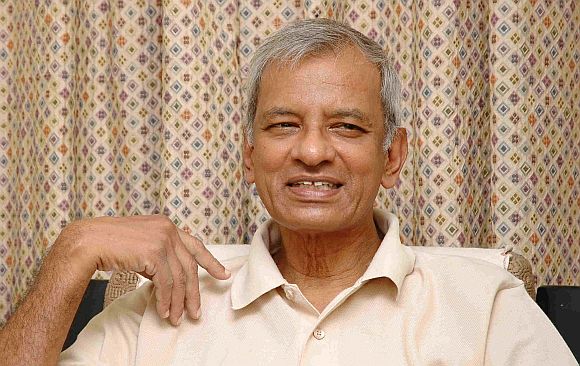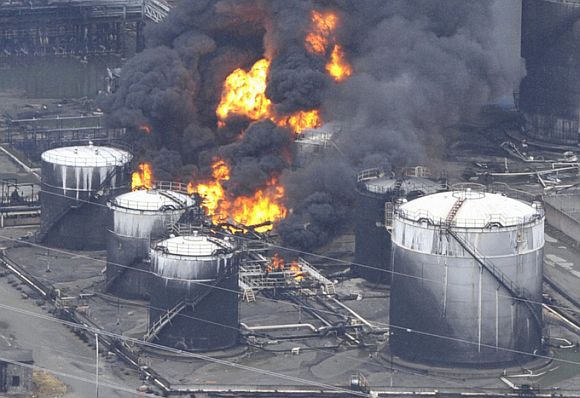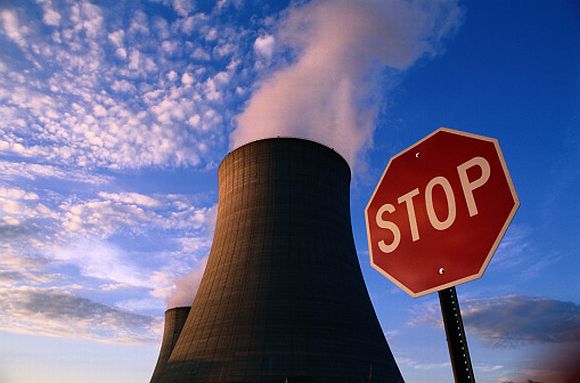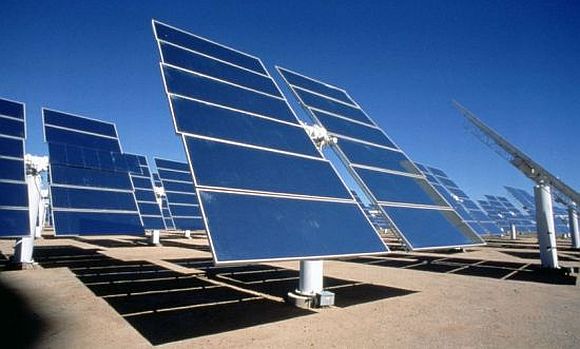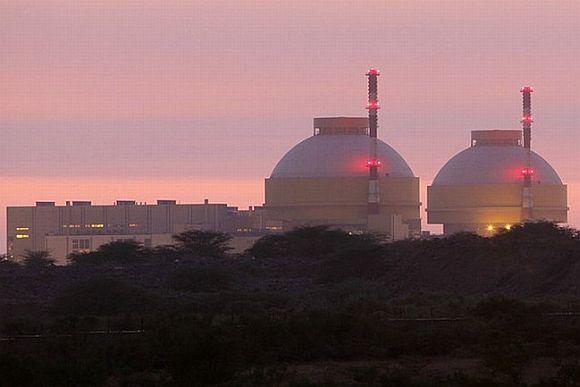 | « Back to article | Print this article |
'Koodankulam is safer, more modern than Kalpakkam'
Dr Suresh Moses Lee, who was one of the members of the panel of experts constituted by the Centre to examine the reactors of Koodankulam Nuclear Power Project, talks to rediff.com's Shobha Warrier about the safety aspects of the controversial plant.
As one of the members of the central panel of experts, what were the safety aspects you were examining at the Koodankulam nuclear power plant?
Some of the panel members had been studying the plant from the time of its construction. They were aware of the safety features.
So, we first got reports from the Nuclear Power Corporation and the Atomic Energy Regulatory Board about the safety features.
Many of the members in the panel were not people connected with nuclear reactors, but experts in various other fields like oceanography, seismology, etc. There were questions raised about the seismic potential of the area, chances of a tsunami coming, etc.
You cannot study the safety of the reactors overnight; it has to be studied over the years and such people were in the committee and also those from NPC. We visited the plant, studied the reports and there was not a single person in the committee who had serious reservations about the safety of the plant. People like me are experts in the field of safety of reactors.
Click on NEXT to read further...
'The panel's main objective was to allay people's fears'
What was the main objective of the panel then?
The main objective was to allay people's fears. We were to study the safety reports and convince people that the reactors were safe.
So, the aim of the panel was more to understand what was in the public mind, why they were afraid of and how we could present the safety features in a simple manner. We were to tell them why their fears are not really justified.
Could you meet the people and talk to them?
That is the unfortunate part. We wanted to go to schools, colleges and other forums and explain to people how safe the reactors are. But that did not happen. We only spoke to some of their representatives and answered their queries.
We had four meetings with the representatives at the Collector's office at Tirunelveli and the last meeting was on January 31.
Click on NEXT to read further...
'Nuclear power is safer than other sources of power'
What were the people afraid of?
They were afraid that there would be nuclear waste storage there, which is not true. Another big fear was, in case of an accident, would there be radioactive leakage and would they have to leave the area? They thought they would not be able to come back to their houses for centuries.
We told them that accidents like those that occurred in Three Mile Island, Chernobyl and Fukushima would not happen here.
Can anyone guarantee that there would not be any such accidents?
Nobody can guarantee. Reactors are designed to withstand accidents occurring from external events like seismic activity of certain magnitude or tsunami of certain magnitude.
The earthquake that occurred in Japan was the strongest recorded in the history of Japan. Still, all the 11 nuclear reactors of the area survived except four. In fact, after a less strong earthquake in a nearby area, these four reactors had to be retrofitted and they had delayed it.
But this will not happen in Koodankulam. After the Japan earthquake, external events have become quite serious. So, we were asked to study beyond design-based accidents. For example, how much can the Koodankulam reactors tolerate external events? We have found that this plant can withstand all that. Probabilities of something like that happening have been made very low.
We have data to show that nuclear power is safer than other sources of power. Severe accidents occur in coal mines. Severe dam bursts have happened. There is not much loss of life due to nuclear accidents when compared to them.
Click on NEXT to read further...
'Koodankulam is safer, more modern than Kalpakkam'
You were the director of the safety research institute at Kalpakkam nuclear power plant. What is the difference between Kalpakkam and Koodankulam?
Koodankulam is much more modern and safe with advanced safety features. They are two different types of reactors. At Kalpakkam, we have PHW (Pressurised Heavy Water) reactors but at Koodankulam, it is a light water reactor.
Heavy water reactors have some inherent safety features while light water reactors need extra safety features. But in light water reactors, water itself is a moderator.
Out of the three major nuclear accidents -- Three Mile Island, Chernobyl and Fukushima -- in Three Mile Island and Fukushima, the reactors were safely shut down when the mishap occurred. We reactor people call Chernobyl the real accident where there was a power surge and an explosion.
In Koodankulam's case, there are many extra safety features compared to Fukushima or Three Mile Island.
As a nuclear scientist associated with safety research at Kalpakkam, would you say Koodankulam is safe?
I would say, Koodankulam is very safe, safer and more modern than Kalpakkam. The ARB had asked Russians for extra safety features and India has paid more for it.
Click on NEXT to read further...
'Japan cannot permanently shut down all the reactors. It will collapse then'
There were reports that the last of the 54 nuclear reactors in Japan has been shut down, and Germany also plans to shut down their nuclear reactors. Do you think the world is moving away from nuclear power projects?
The reports that came in the papers about the Japanese reactors are incorrect. They have not permanently shut down the reactors; they have been told to shut down to retrofit the safety features.
They were continuing to operate even after the Fukushima mishap. After some studies on the accident, they found out what could be done to protect other reactors beyond design-based mishaps as all the reactors in Japan are on the coast.
Now, they are progressively shutting down all the reactors to retrofit and restart. They just cannot permanently shut down all the reactors. Japan will collapse then.
In Germany, they are only shutting down the reactors whose lifespan is over. There are also reports that they are planning to construct new reactors. What happened there now is, some of the green parties in some states have become very powerful and they are saying no to nuclear power.
Depending on a country's need, different energy resources have to be developed. Gemany's strength is its enormous coal reserves. In fact, after World War 1, after its defeat, Germany was asked to supply coal to France. That became one of the reasons for the Second World War.
Seventy per cent of France's energy is nuclear today. Japan also had to depend on nuclear energy for all its needs. Germany can afford to go anti-nuclear because of its coal reserves.
Click on NEXT to read further...
'Right now, nuclear energy is the best option for India'
From India's viewpoint, which is the best option for its energy needs?
The potential for solar, wind, tidal and biomass is one-tenth of the country's requirement. For solar, the potential is not limited but you need a large amount of area.
At present, India generates 182 GW power and it aims at 500-600 GW power and the potential of renewable source is only 1/10th of our requirement.
The report released by the ministry of non-conventional energy resources says that the potential of wind power is 48.5 GW, small hydro 15 GW, bio power 24 GW and solar power 20-30GW per 1000 sq km.
Does that mean we have to go for either hydro or nuclear energy?
In the case of hydroelectric, our power potential is 84 GW and we have developed 25-30 per cent of it. But there is enormous opposition from the public in developing hydro electric energy and much of it can happen only in the Himalayan region. People are against dams. So, hydro is also sort of saturated.
That leaves coal and nuclear energy. Coal is not in short supply right now but in another 70-80 years, coal will be a problem. In the southern part of India, even now it is a problem. I feel, right now, nuclear energy is the best option for India.
Click on NEXT to read further...
'To meet its energy needs, India has to go for nuclear energy'
Will the world move towards renewable energy?
It is going to vary from location to location.
The whole world cannot move towards renewable energy. Some countries in Europe are very small like the Netherlands and they can opt for renewable energy in a big way.
Now, look at the number of nuclear reactors some of the countries have; Sweden has 10, Germany has nine and the US has 104 reactors.
In the case of India also, if we need to meet our energy needs, we have to go for nuclear energy.
Click on NEXT to go further...
